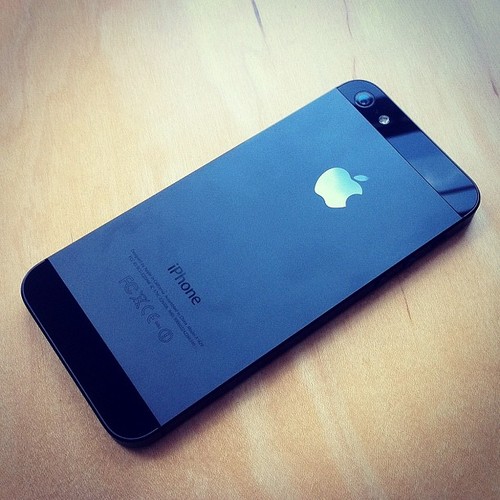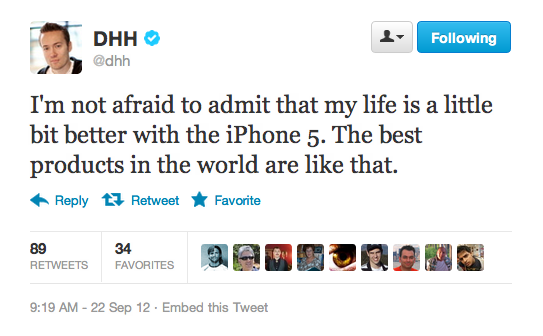September 23rd, 2012
Like the Supercomputer It Is
In a fit of early-morning delirium I approached the head of the line at the Soho Apple Store just before 8am on Friday. They gave me a card and asked if I had any questions. So I asked about cases, because no one drops phones like this girl.
The guy in the blue shirt said no cases. I replied that I guess I would have to be extra careful.
And then, in a moment of unscripted wonderful, the Apple employee stared back at me and said:
“…you should treat it like the supercomputer it is.”
Although my first reaction was to roll my eyes and dismiss his comment as fanboyishness at its best, it got to me.
Two days go by and people ask what I like about the new phone, wondering if they should upgrade. And I can’t quite come up with an answer. Sure, I am happy to pass on kind words about the speed and cameras and features and LTE and weight and what-have-you, but that’s just not really it.
The public reaction has been overwhelmingly positive (except for the maps mini-fiasco). Even @dhh was impressed. His normally snark-tastic Twitter stream featured a rather genuine and eloquent reaction to the device:
Fast forward to Saturday, when I am at the Bruckner Blvd Home Depot in the Bronx (the largest HD in the five boroughs, nbd). I am sitting at the picnic tables outside, drinking cherry coke and trying to not blatantly eavsdrop on the people next to me. It was a 15 year-old explaining to his older uncle/brother/dad/cousin about a new app for odd jobs. The younger one pulls up the website on his brand new iPhone and walks through the app – explaning that you can segment jobs by type and location and walking through how you can place bids on the jobs you want. They found one that looked good, and placed a bid right then. It was really great to see TaskRabbit in the wild, but even more awesome to see this entire series of events happen at a picnic table outside Home Depot in about 3 minutes.
Mostly when people have their phones out in public they are looking at photos or playing games or listening to music or reading. There’s just not a lot of transactional behavior happening, so it was really neat to see.
While all of us tech-lovers have been celebrating smartphones for years and years, I think it’s worth the reminder that the mobile economy is so incredibly nascent and only going to become more interesting. After a brief brainstorm the other day, the only mobile-only billion dollar companies I could name were Instagram, Square and Rovio (add more in the comments if you have any). Surely there will be more epicness to follow.
Perhaps it’s that most futurist types live so far in the future that they miss out on the moment when the *real* shift happens for the rest of the world.
And so I keep thinking about the supercomputer comment. The idea of a powerful machine in my pocket sounds trite at this point, but still really isn’t. Smartphone penetration passed 50% just this year (2012). What will the world look like when it’s at 70%? 90%? Perhaps that’s what I like best about the iPhone 5 – that it, even more than any other iPhone launch IMO, sits so perfectly at the intersection of the future and the present.
#ButUGotThatiPhone5Tho…right?!

